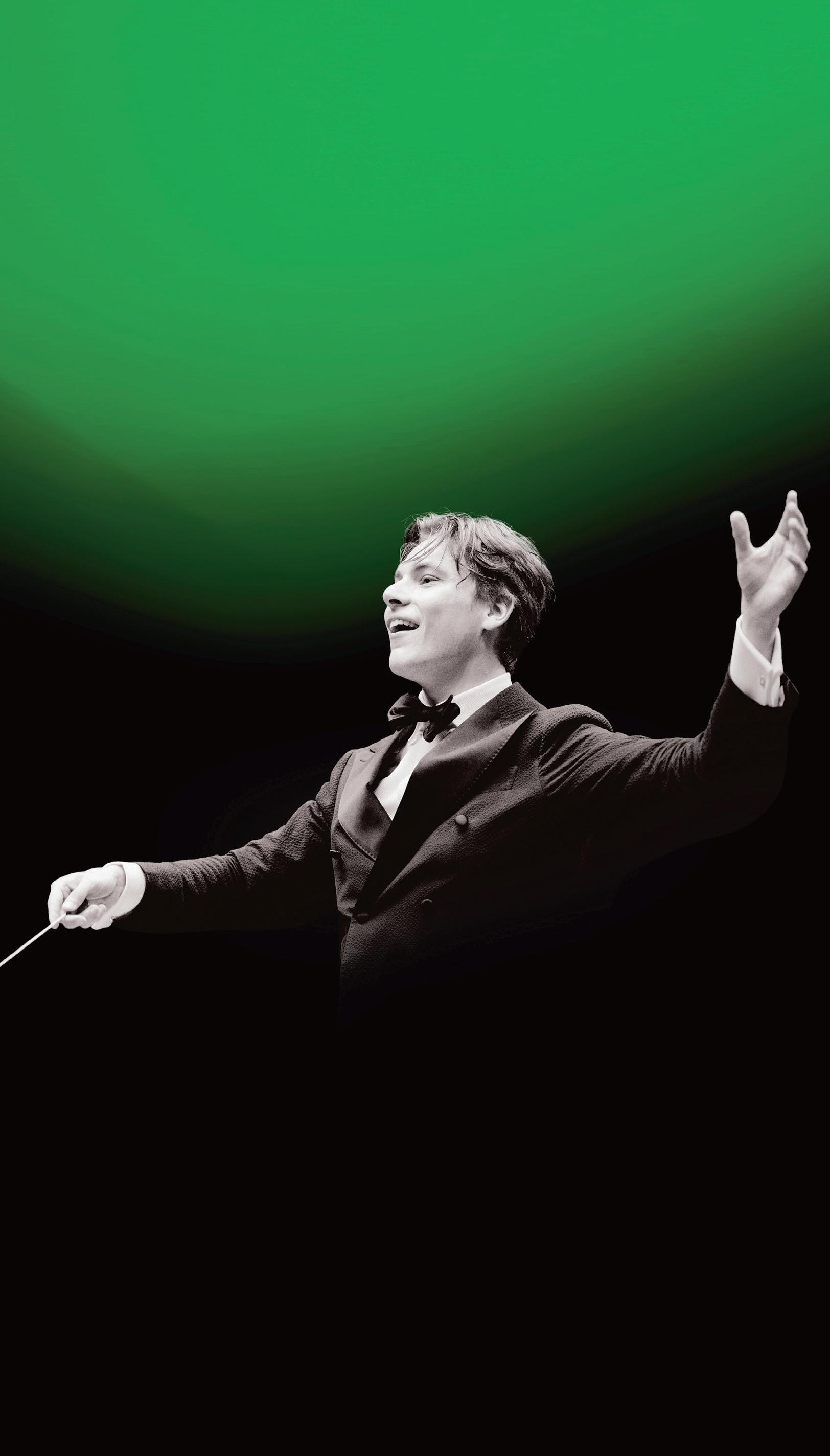
Expect the Extraordinary The Rite of Spring APRIL 18–20, 2024 23 24
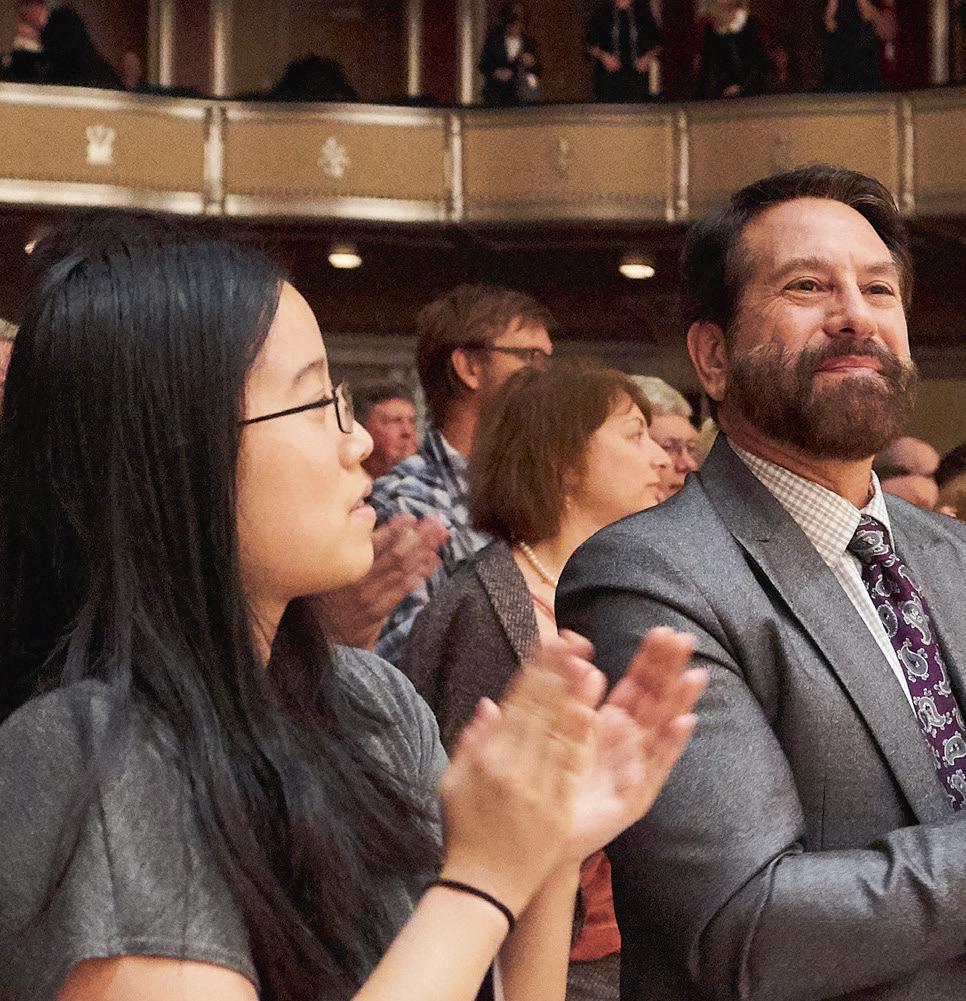

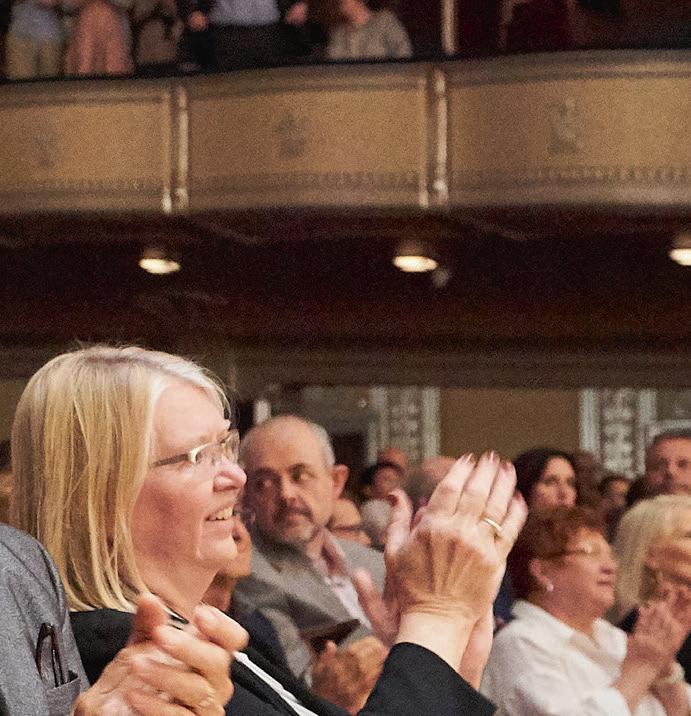

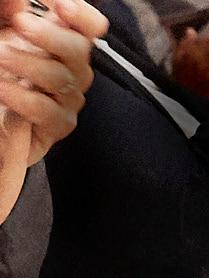
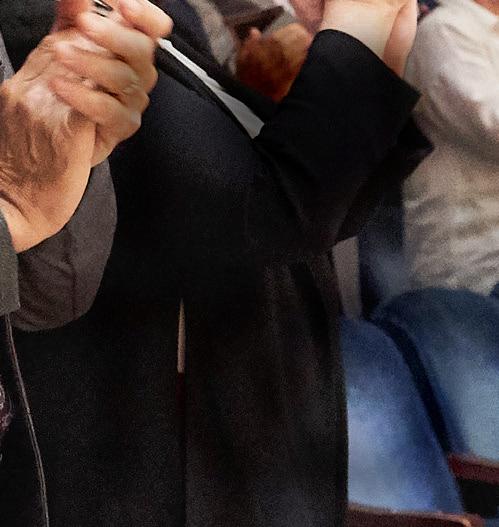


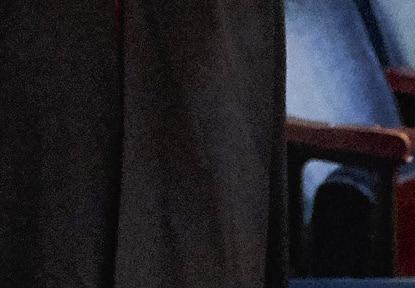

IMusic Lovers:
You are the magic behind every powerful performance. With this season approaching its finale, the Orchestra needs donations from friends like you to finish the year strong! Your help makes all the difference.
Be a champion for music with your donation today!
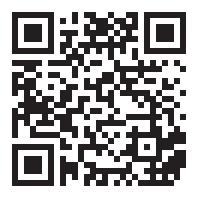
clevelandorchestra.com/give 216-456-8400
2023/2024 SEASON
JACK, JOSEPH AND MORTON MANDEL CONCERT HALL AT SEVERANCE MUSIC CENTER
The Rite of Spring
Thursday, April 18, 2024, at 7:30 PM
Friday, April 19, 2024, at 7:30 PM
Saturday, April 20, 2024, at 8 PM
Klaus Mäkelä, conductor
Darius Milhaud (1892–1974)
George Gershwin (1898–1937)
Le Bœuf sur le toit, Op. 58
15 minutes (The Ox on the Roof)
Concerto in F for
Piano and Orchestra
I. Allegro II. Adagio — Andante con moto
III. Allegro agitato
Jean-Yves Thibaudet, piano
INTERMISSION
Igor Stravinsky (1882–1971)
The Rite of Spring
Part I: The Adoration of the Earth
Introduction —
30 minutes
Thank you for silencing your electronic devices.
Total approximate running time: 1 hour 35 minutes
20 minutes
30 minutes
The Augurs of Spring (Dances of the Young Girls) —
Ritual of Abduction — Spring Rounds —
Ritual of the Rival Tribes —
Procession of the Sage —
The Sage —
Dance of the Earth
Part II: The Sacrifice
Introduction —
Mystic Circle of the Young Girls —
Glorification of the Chosen One —
Evocation of the Ancestors —
Ritual Action of the Ancestors —
Sacrificial Dance (The Chosen One)
clevelandorchestra.com THE CLEVELAND ORCHESTRA COVER: PHOTO BY MARCO BORGGREVE

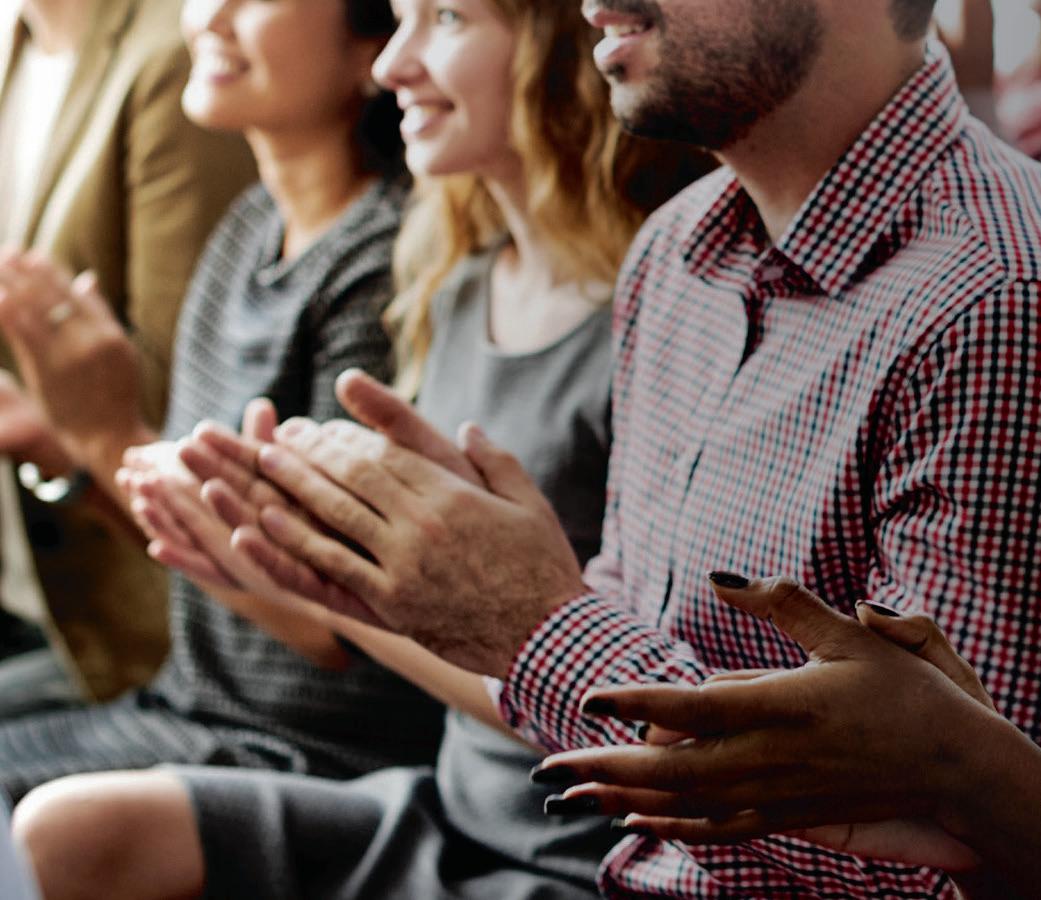


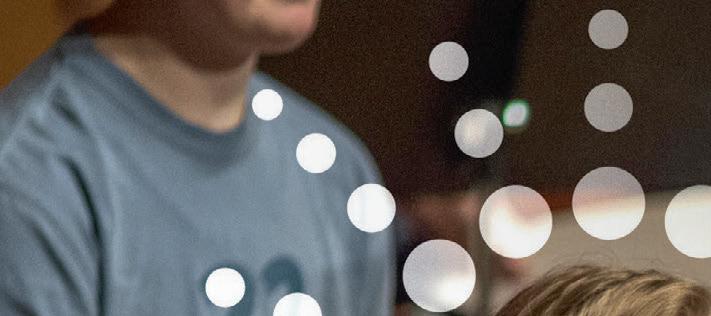





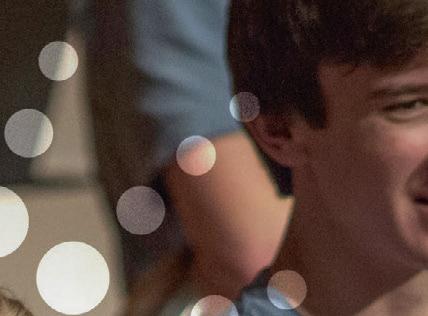

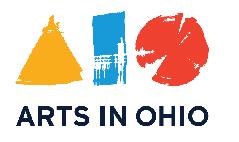

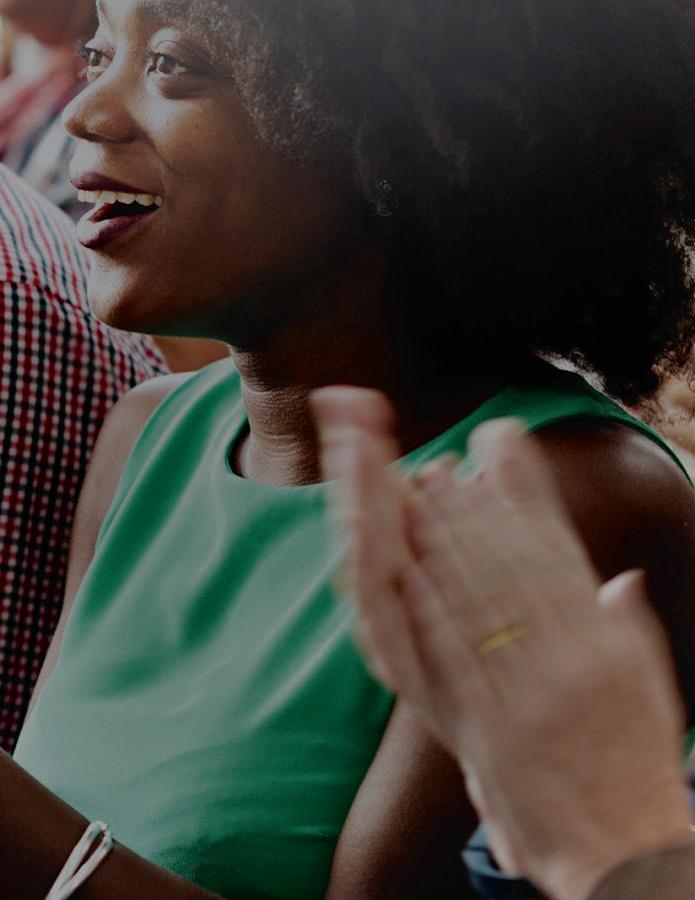

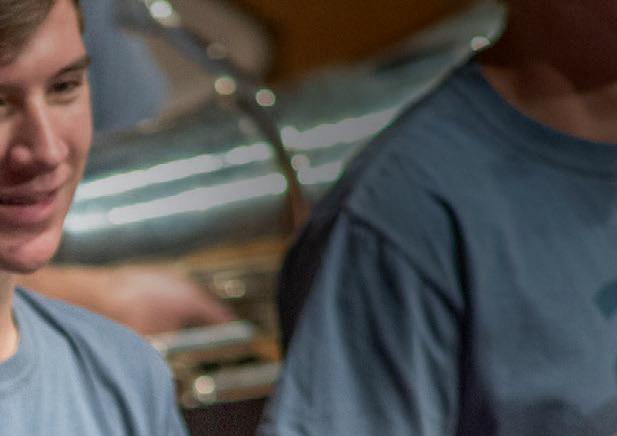

















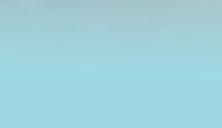




Contemporary Youth Orchestra ROB ER T MULLE R I F YO U’ RE LO OK ING TO create
E P L R E N L I NE
evel
nd
ts
something magical.
Cl
a
Ar
Event s .com connects you to the region’s vibrant arts and culture scene With just a few clicks, discover hundreds of events made possible in part with public funding from Cuyahoga Arts & Culture.
IN HIS CONCERTO IN F , George Gershwin intended, in his own words, to “represent the young enthusiastic spirit of American life,” incorporating, much to the horror of old-school music critics of the day, the Charleston rhythm and the melodic inflections of the blues. Antonín Dvořák had ignited the search for a truly American style of music — as opposed to the traditional Germanic European style — years earlier by suggesting that African American and Native American melodies might provide the basis for a serious “American” music. But no one had successfully unlocked the secret of an all-embracing American style until Gershwin produced, first, Rhapsody in Blue in 1924 followed swiftly by the Concerto in F in 1925. Nothing could be more contemporary or more American than the vigorous dance rhythms and bitter-sweet melodies that run through the concerto’s three movements, played in this week’s performances by eminent French pianist Jean-Yves Thibaudet.

Some of this appetite for bracing rhythms came from the latest neoclassical pieces that the French composers of “Les Six” were churning out in Paris, such as Darius Milhaud’s Le Bœuf sur le toit (The Ox on the Roof). Premiered in 1920 as a ballet at the Théâtre des Champs-Élysées, this 15-minute romp is filled with echoes of Brazilian music, both whimsical and raucous.
Seven years prior, the 1913 premiere of The Rite of Spring scandalized audiences at the Théâtre des Champs-Élysées with rhythms of a different sort — ones more raw, expressive, and even violent. Like Gershwin, Igor Stravinsky had also been searching for a way to express the essence of his native country, but his solution was not to represent a contemporary spirit but to dig back to the primitive culture of old Russia. New Yorkers heard this music for the first time in Carnegie Hall under German conductor Wilhelm Furtwängler. This was in January 1925, only a few months before Gershwin started sketching out his Concerto in F. Did Gershwin attend that concert? Historical record is unclear, but what is certain is that the air was full of the rhythms of the dance that year. — Hugh Macdonald
clevelandorchestra.com | 3
PHOTO BY TIM EVANSON / COURTESY OF WIKIMEDIA COMONS
INTRODUCTION
George Gershwin, painted by Belarusian-American artist William AuerbachLevy in 1926, the year following the premiere of the composer’s Concerto in F.
EARN POINTS
•Attend concerts
•Watch videos
•Answer quizzes
•Give feedback
GET REWARDS
•Seat upgrades
•Exclusive content
• FREE season of Adella with 3000 Rewards points
• VIP experiences and more
JOIN NOW

Already a member?
Log in to your account at my.clevelandorchestra.com and click “Rewards” in the menu.
CLEVELANDORCHESTRA.COM/REWARDS
216-231-1111
THE PLACE FOR FANS OF THE CLEVELAND ORCHESTRA
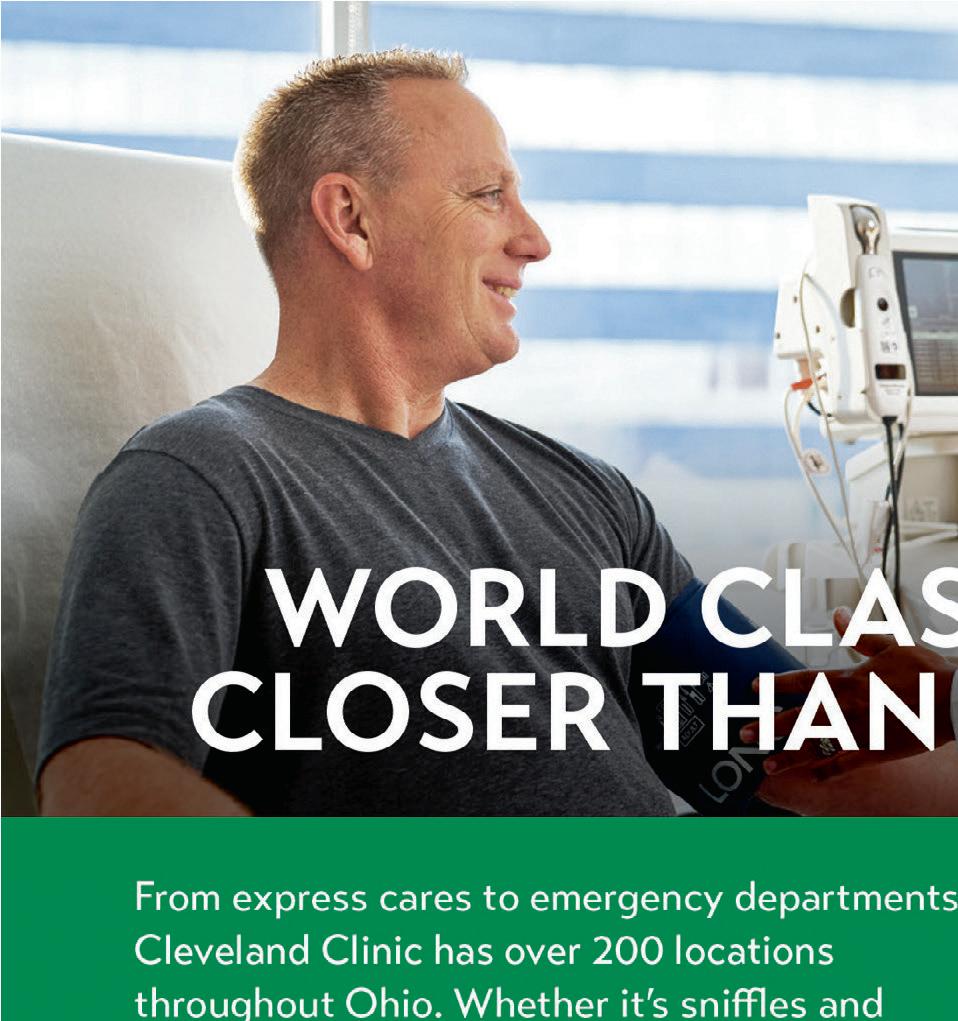

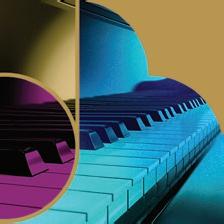





Le Bœuf sur le toit, Op. 58 (The Ox on the Roof)
by Darius Milhaud
BORN : September 4, 1892, in Marseille, France
DIED : June 22, 1974, in Geneva, Switzerland
▶ COMPOSED: 1918–19
▶ WORLD PREMIERE: February 21, 1920, at the Théâtre des Champs-Élysées in Paris, conducted by Vladimir Golschmann and staged by Jean Cocteau
▶ CLEVELAND ORCHESTRA PREMIERE: August 29, 1972, at a Pops Promenade concert led by Michael Charry
▶ ORCHESTRATION: 2 flutes, oboe, 2 clarinets, bassoon, 2 horns, 2 trumpets, trombone, percussion (bass drum, cymbals, güiro, tambourine), and strings
▶ DURATION: about 15 minutes
BY ALL ACCOUNTS , Darius Milhaud
was a most congenial man. In the 1920s, he was one of “Les Six” (The Six), a group of composers dedicated to puncturing pomposity in music, reveling in the novelties of the then-fashionable neoclassical aesthetic. Still, most, if not all six, felt that their music had a fundamental seriousness of purpose beneath the frivolity and fun.
Milhaud met writer Paul Claudel in 1915, who opened a new window in Milhaud’s life by inviting him to Brazil as his assistant when he was appointed French ambassador in Rio de Janeiro. Milhaud remained there for two years and was so enchanted with the characteristic lilt of Brazilian music that he “bought a lot of maxixes and tangos and tried to play them with the syncopated
rhythms that go from one hand to the other.” Back in France, Milhaud assembled a few popular Brazilian melodies and transcribed them as a set for small orchestra with a rondo theme recurring between each pair of tunes.
One of the tunes he heard was called “O Boi no Telhado” (The Ox on the Roof), which gave him a title for the compilation, which he put together on his return to Paris after the Armistice. Le Bœuf sur le toit (its French title) was simply conceived as a celebration of Brazilian popular music, which Milhaud imagined would be suitable background for a silent film (he had Charlie Chaplin in mind). But in the heady months that followed the outbreak of peace, Les Six sprang to celebrity, and writer-filmmaker-playwright Jean Cocteau assumed the mantle of priest
6 | 2023/2024 SEASON
THE MUSIC

and prophet, guiding their efforts.
Cocteau decided that Le Bœuf sur le toit would be a ballet, which he presented at the Théâtre des Champs-Élysées (where Diaghilev’s famous ballets had been staged) in February 1920. The surrealist scenario, incredibly, had nothing to do with Brazil, but was set in a New York bar in the new era of Prohibition. The bartender offers drinks all round, but a policeman arrives and the bar is instantly transformed into a dairy bar, where the patrons dance while drinking milk. The policeman is decapitated by a ceiling fan. A redheaded lady dances with the policeman’s head. Everyone leaves, and the bartender presents the bill to the policeman who has miraculously resurrected.
Odd as it may seem, the ballet was a great success. Milhaud acquired an immediate reputation as a droll composer, which he did not entirely resent.
Cocteau and Milhaud even allowed the name Le Bœuf sur le toit to be used as the name of a Parisian bar, which everyone assumed was owned and run by them. (Some thought that the ballet had been named after the bar.)
A bewitching two-beat pulse is sustained throughout the work, with the tempo relaxed a little from time to time. The syncopation, which thrilled Milhaud during the Rio carnival, is present throughout, supported by a one-person percussion section (which Stravinsky had featured in The Soldier’s Tale). The orchestration is witty and deft. Milhaud made a number of arrangements, including one for two pianos and another, titled Cinéma-Fantaisie, for violin and piano.
— Hugh Macdonald
Hugh Macdonald is Avis H. Blewett Professor Emeritus of Music at Washington University in St. Louis. He has written books on Beethoven, Berlioz, Bizet, and Scriabin, as well as Music in 1853: The Biography of a Year
clevelandorchestra.com | 7
PHOTO COURTESY
PRESS
French composer Darius Milhaud was a member of Les Six, a group of six French composers who reacted against the overblown emotions of Romanticism and Impressionism with music that was light, witty, and accessible.
OF MEURISSE
AGENCY / WIKIMEDIA COMMONS
Concerto in F for Piano and Orchestra
by George Gershwin
BORN : September 26, 1898, in Brooklyn
DIED : July 11, 1937, in Hollywood
▶ COMPOSED: 1925
▶ WORLD PREMIERE: December 3, 1925, with the composer as soloist and Walter Damrosch conducting the New York Symphony
▶ CLEVELAND ORCHESTRA PREMIERE: January 4, 1940, featuring pianist Oscar Levant and conductor Rudolf Ringwall
▶ ORCHESTRATION: 2 flutes, piccolo, 2 oboes, English horn, 2 clarinets, bass clarinet, 2 bassoons, 4 horns, 3 trumpets, 3 trombones, tuba, timpani, percussion (bass drum, snare drum, woodblock, slapstick, cymbals, suspended cymbals, gong, orchestra bells, xylophone, triangle), and strings, plus solo piano
▶ DURATION: about 30 minutes
NOBODY HAD ANY DOUBT that George Gershwin was talented when he started to take piano lessons in his native Brooklyn at the age of 10. But who in the busy, overcrowded, poor neighborhood of New York’s East Side would have been bold enough to say that the boy would turn out to be the most famous and successful American composer in the first half of the 20th century? Unlike most composers, he made a fortune from his music. There is a story that when he once asked Arnold Schoenberg whether he could study with him, Schoenberg allegedly asked, “How much money do you make? “$100,000 a year,” Gershwin answered. “Well then,” said Schoenberg, “may I study with you?” (The two fostered an unlikely, yet charming
friendship. When Schoenberg moved to Los Angeles in 1934, one of his favorite hobbies was sharing a frequent match of tennis with Gershwin.)
The fact that Gershwin’s music is both “popular” and “classical” at the same time explains part of the mystery. He was a good pianist, a clever player of the popular tunes of his day as well as of his own, but his favorite composers were Mozart, Debussy, and Stravinsky
He wrote dozens of songs and hit shows, and closed his shockingly short life (only 39 years) with a “folk opera” that is admired all over the world: Porgy and Bess. He wrote for the stage and for the movies, and also had a hankering after the concert hall; such works as Rhapsody in Blue, An American in Paris, and the
8 | 2023/2024 SEASON
THE MUSIC

Gershwin’s great achievement was not so much that his life became a “hit” after a youth of poverty. It was that he found a way to combine “serious” musical expression with the essence of an American invention: jazz. “Jazz,” he wrote, “is the result of the energy stored up in America. It is a very energetic kind of music, noisy, boisterous, and even vulgar. One thing is certain: jazz has con-
tributed an enduring value to America in the sense that it has expressed ourselves. It is an original American achievement which will endure, not as jazz, perhaps, but which will leave its mark on future music in one form or another.”
The Concerto in F was composed almost immediately after Rhapsody in Blue. Conductor Walter Damrosch
clevelandorchestra.com | 9
Concerto in F are staples of the repertoire in the lighter vein.
PHOTO BY CARL VAN VECHTEN / COURTESY OF WIKIMEDIA COMMONS
George Gershwin fostered a distinct musical style that merged “serious” classical forms with “popular” American sounds, such as jazz.
THE MUSIC
was present at the Rhapsody’s first performance in 1924, and, impressed by the work’s success and novelty, asked Gershwin for a three-movement piano concerto the following day. Gershwin agreed, though work on several other projects prevented the concerto’s completion until fall 1925. (Unlike Rhapsody in Blue, which was orchestrated by Ferde Grofé, Gershwin orchestrated the concerto himself.) The concerto premiered in December 1925 with the composer at the piano and Damrosch leading the New York Symphony.
The first movement of the Concerto in F, Gershwin himself remarked, was “in sonata form,” a three-part structure that typically features an exposition (where the main musical themes are introduced), a development section (where the material is expanded), and a recapitulation (that returns to the expository material). What is more certain is that the music is dominated by the characteristic rhythm of the American dance called the Charleston. The concerto opens with a literal “bang” from the percussion — a motif that returns throughout — before the Charleston rhythm in the orchestra raises the curtain for the piano. The soloist introduces a pensive melody but the dialog between piano and orchestra grows more exuberant as the movement progresses.
The slow second movement is in three-part song form, within which the “tragi-comic nature of the blues” is suggested, with much unusual scoring.


Particularly notable here are the extended interludes for orchestra, which include prominent solos for trumpet that soar over the ensemble. A cheeky middle section brightens the mood — spurred on by the piano — but the music ultimately returns to the languid blues-like mood of the opening.
The boisterous finale leaps out of the gate with a quick melody that suggests the breathless movements of ragtime. (Gershwin amusingly described this movement as having an “orgy of rhythms.”) Themes from the preceding movements are reused in new ways, in addition to fresh material, and the circle is closed when music from the beginning of the concerto recurs brilliantly.
—adapted from a note by Klaus G. Roy Writer, composer, critic, and educator Klaus G. Roy was The Cleveland Orchestra’s program editor and annotator from 1957 to 1988. He received the Orchestra’s Distinguished Service Award in 2005.
10 | 2023/2024 SEASON
Gershwin achieved an unprecedented level of fame for an American composer, even appearing on the cover of TIME magazine in 1925.
PHOTO COURTESY OF TIME / WIKIMEDIA COMMONS




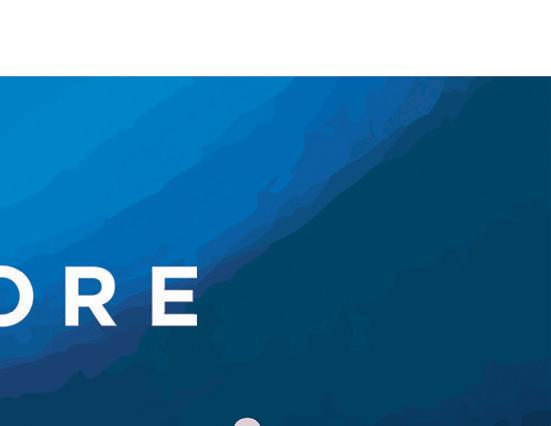


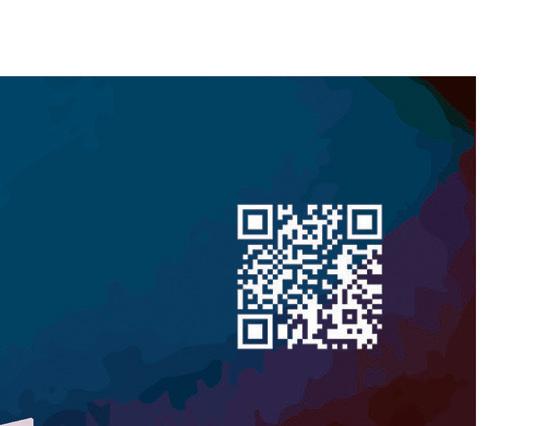



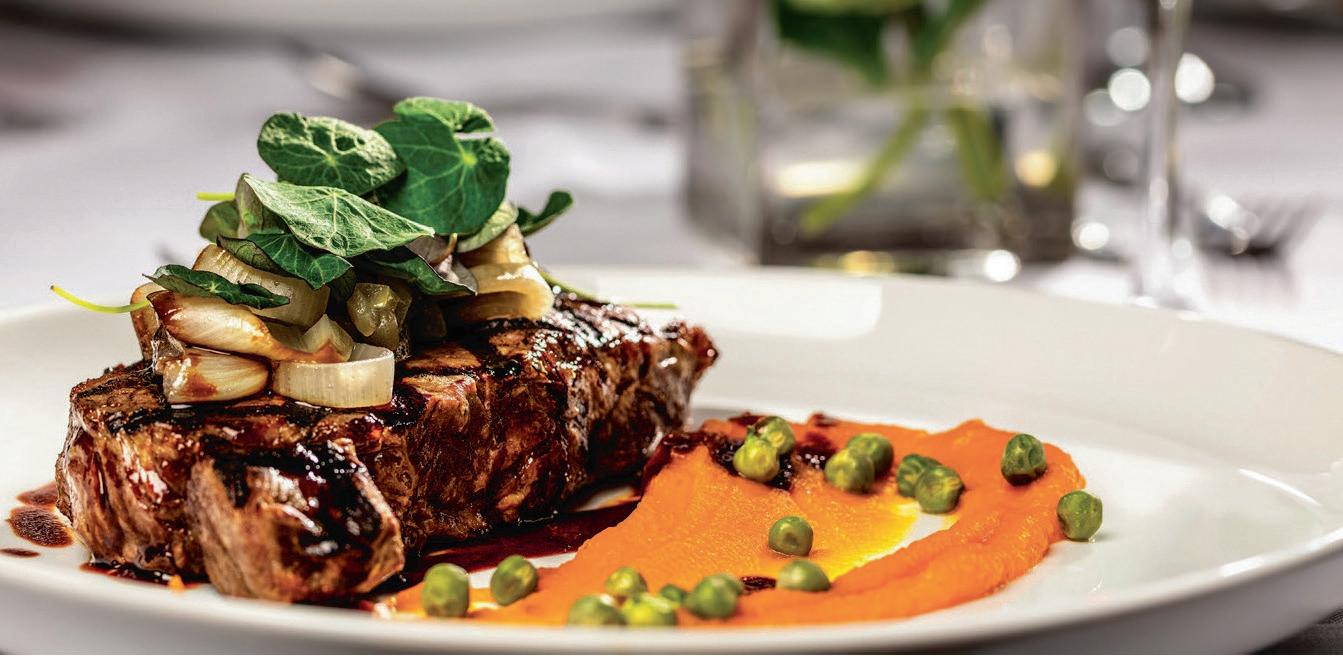






EXPLORE LUXURY SENIOR LIVING IN SHAKER HEIGHTS SHAKER HEIGHTS | (216) 677-4484
The Rite of Spring
by Igor Stravinsky
BORN : June 17, 1882, in Oranienbaum (now Lomonosov), Russia
DIED : April 6, 1971, in New York City
▶ COMPOSED: 1911–13, revised 1947
▶ WORLD PREMIERE : May 29, 1913, by Sergei Diaghilev’s Ballets Russes at the Théâtre des Champs-Élysées in Paris, with Pierre Monteux conducting
▶ CLEVELAND ORCHESTRA PREMIERE: March 14, 1935, conducted by Music Director Artur Rodziński
▶ ORCHESTRATION: 3 flutes (3rd doubling piccolo), alto flute, piccolo, 4 oboes (4th doubling English horn), English horn, 4 clarinets (3rd doubling bass clarinet), bass clarinet, 4 bassoons (4th doubling contrabassoon), contrabassoon, 8 horns (7th and 8th doubling tenor tubas), 4 trumpets (4th doubling bass trumpet), piccolo trumpet, 3 trombones, 2 tubas, timpani, percussion (bass drum, tambourine, cymbals, antique cymbals, triangle, tam-tam, güiro), and strings
▶ DURATION: about 30 minutes
IT IS NO EXAGGERATION to say that The Rite of Spring changed the course of 20th-century music like no other work. A number of essential issues (national identity and universalism; new approaches to melody, harmony, and rhythm; replacing conventional plot with a more abstract subject matter) are presented in this masterpiece with such power that few composers in the last 100 years have been able to avoid the challenge of facing them, in one way or another.
It all began like just another show for the impresario Sergei Diaghilev’s Parisbased company, the Ballets Russes. Diaghilev’s magic formula, the combina-
tion of virtuoso dancing with the exotic appeal of far-away Russia had worked wonders with French audiences, particularly in The Firebird and Petrushka, which had revealed to the world the company’s young star composer, Igor Stravinsky. Following these, Diaghilev would again reunite with Stravinsky, and dancer-choreographer Vaslav Nijinsky, for a third production: The Rite of Spring.
Stravinsky reports in his autobiography how the idea for The Rite of Spring was first revealed to him:
The Rite of Spring was still creating musical shockwaves by the time this photograph of Igor Stravinsky was taken in the early 1920s.
12 | 2023/2024 SEASON
THE MUSIC
1069641_Cleveland Orchestra_Week 20_single_sw

clevelandorchestra.com | 13 PHOTO COURTESY BAIN NEWS SERVICE / THE LIBRARY OF CONGRESS
THE MUSIC
“One day, when I was finishing the last pages of The Firebird in St. Petersburg, I had a fleeting vision which came to me as a complete surprise, my mind at the moment being full of other things. I saw in imagination a solemn pagan rite: sage elders, seated in a circle, watched a young girl dance herself to death. They were sacrificing her to propitiate the god of spring.”
Together with painter Nicholas Roerich — who designed the ballet’s sets and costumes and held a vast knowledge of prehistoric Russia — the two created an authentic scenario. It was to be a
ballet, as musicologist Richard Taruskin wrote, “devoid of plot in the conventional sense. ... [It] would not tell a story of a pagan ritual; it would be that ritual.” Stravinsky and Roerich seem to have decided together that the “Great Sacrifice” should be preceded by a celebration of the Earth, with traditional ritual games re-enacted onstage and culminating in a wild stomping dance.
In its final form, the scenario of The Rite of Spring incorporates a number of allusions to ancient Russian folk rituals, and accordingly, the music relies heavily on ancient Russian folksongs, taken from published collections. This is important to emphasize because in later years, anxious to project a “cosmopolitan”

14 | 2023/2024 SEASON
This stage rendering by Nicholas Roerich depicts the “Glorification of the Chosen One” in Part II of The Rite of Spring
image, Stravinsky went to great lengths to deny the presence of any original folk material in The Rite.
Part I of the work (“The Adoration of the Earth”) begins with a bassoon solo — derived from a Lithuanian folk song — written in the instrument’s highest register that immediately creates a mysterious atmosphere. The following section, “The Augurs of Spring (Dances of the Young Girls),” is based on a rhythmic ostinato (repeating rhythmic pattern) in which the emphasis constantly shifts. The result is a highly irregular and unpredictable rhythm, over which the winds introduce their mostly symmetrical, folksong-like melodies. Following this is a series of connected scenes and dances, culminating with the “Dance of the Earth.” Over a relentless ostinato in the bass, the rest of the orchestra strikes repeated chords in irregular groupings, gradually raising the volume an “earth-shattering” climax.
In Part II (“The Sacrifice”), after a slow introduction, one of the young girls is chosen for the sacrifice. Her selection is announced by 11 drumbeats, immediately followed by her glorification in a quick movement of great rhythmic complexity. After two more short, yet dramatic scenes, the work draws to a close with the “Sacrificial Dance,” whose wild accents surpass in boldness everything heard before. The irresistible energy of this movement never lets up until its unexpected ending.
The Paris premiere of The Rite of
Spring, on May 29, 1913, has gone down as one of the great scandals in the history of music. The performance was nearly drowned out by shouted insults, catcalls, slaps in the face, and general pandemonium. (Parisian jokesters quickly dubbed the work “Le massacre du printemps,” a play on its French title, Le Sacre du printemps.) It is hard to know how much of this was due to the music or to Nijinsky’s jagged choreography. How many people in the audience reacted to the musical and artistic revolution manifest in the work? And how many were simply being swept away by the brouhaha? What is certain is that in this ballet, the sounds of a brute force attacked the calm, apparently untroubled prosperity of the Parisian Belle Époque like an army of barbarians. A year later, that Belle Époque was shattered forever by the cannons of World War I.
After the war’s end, The Rite of Spring quickly became established in the West as a modern classic — a work whose time had truly come. (In fact, the work’s triumph had already begun before the outbreak of the war, with the Paris concert premiere led by conductor Pierre Monteux in April 1914.) Yet Russia for a long time failed to appreciate this profoundly Russian work. Indeed, the work’s vehement rejection by Russian critics precipitated the final break between Stravinsky and his native country. — adapted from a note by Peter Laki
Peter Laki is a musicologist and frequent lecturer on classical music. He is a visiting associate professor of music at Bard College.
clevelandorchestra.com | 15
PHOTO COURTESY OF HERITAGE IMAGE PARTNERSHIP LTD / ALAMY STOCK PHOTO
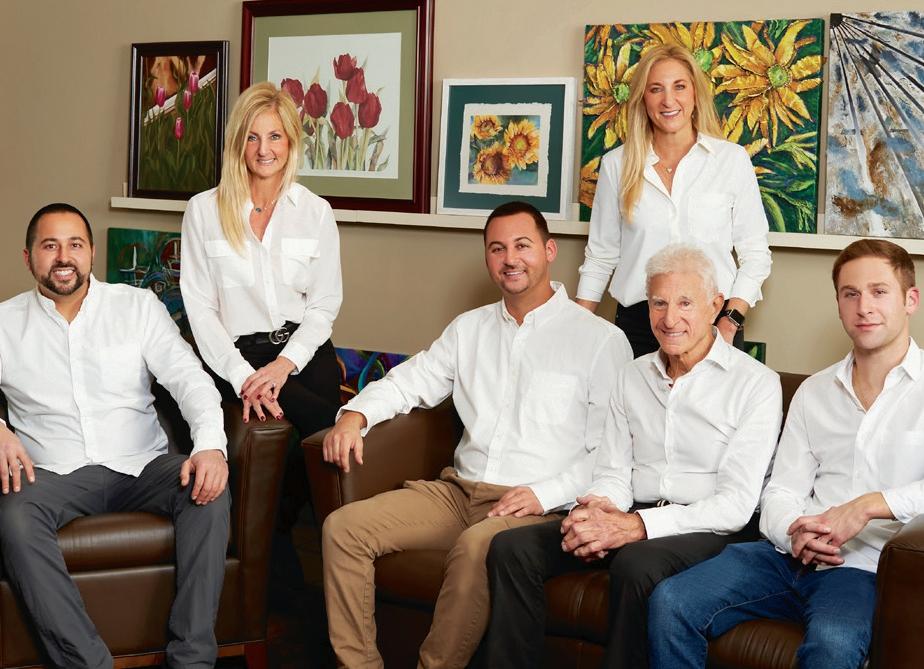
LJI builds con dence in every customer and ensures quality repairs and superior customer service. Our commitment is to achieve and retain customer loyalty for life! 27100 Chagrin Blvd. at I-271 Orange Village (216)364-7100 1640

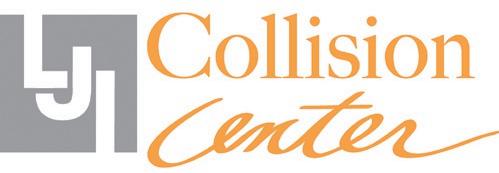
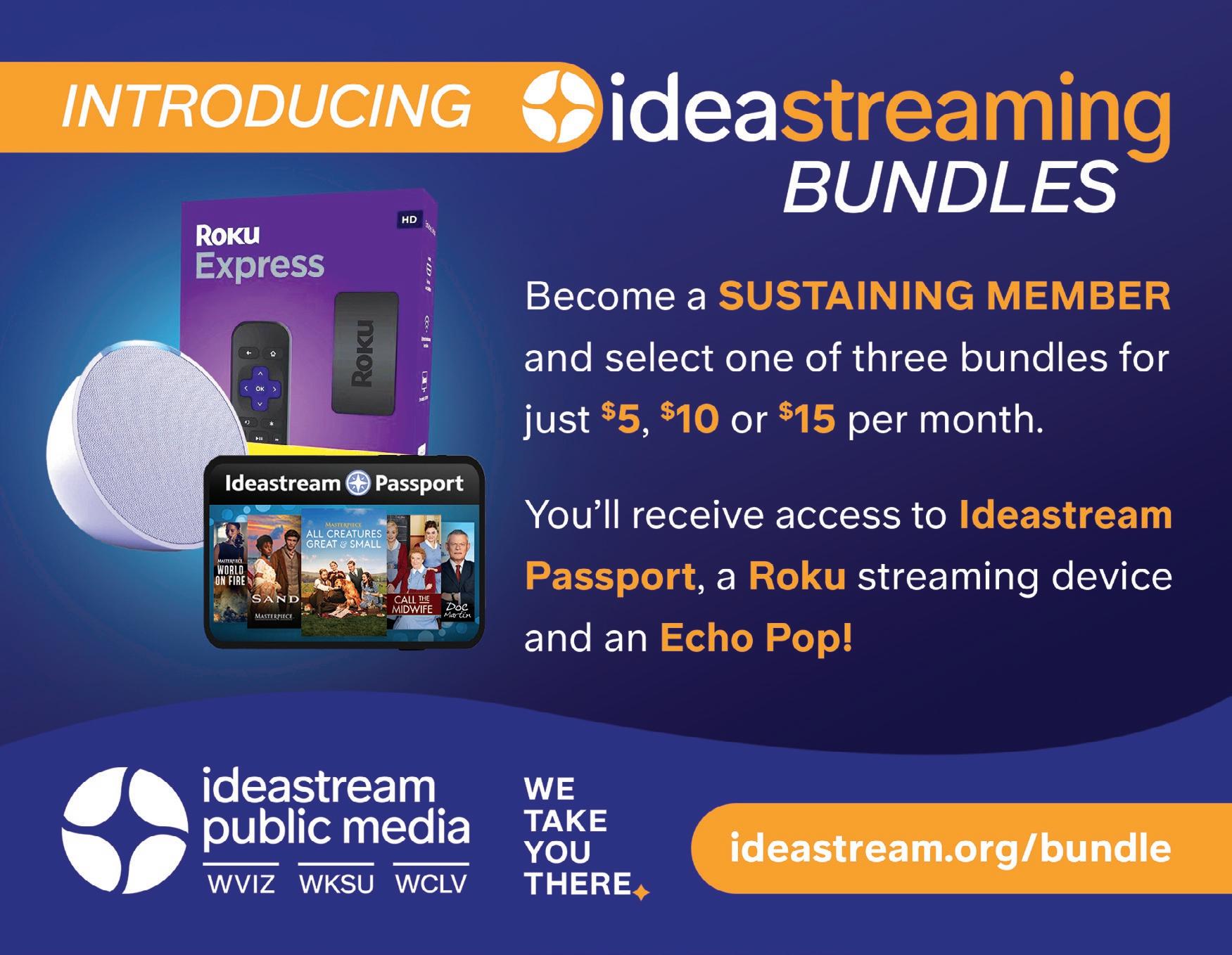
Hts.
Lee Rd. at Mayfield Cleveland
(216)932-7100 TWO LOCATIONS Customer Con dence – Priority One™ ljicollisioncenter.com



34300 Solon Road | Solon, OH | 440-248-2424 | 800-260-2949 One block south of Rt. 422 & SOM Center Road 10-8 M/Th | 10-5:30 Tu/W/F/Sa | www.sedlakinteriors.com Complimentary Delivery and Set-Up Within 60 Miles. CELEBRATING bw.edu BW to Broadway and Beyond | Sun, April 28 | 7pm | Kleist Center for Art & Drama, Mainstage Theatre 23 24 MANDEL OPERA & JACK, JOSEPH AND MORTON MAY 15–26 clevelandorchestra.com/festival WS2324-AD_MANDEL-FESTIVAL - 5x1.8125_B.indd 1 3/27/24 1:52 PM

THE CONDUCTOR
Klaus Mäkelä
Klaus Mäkelä has held the position of chief conductor of the Oslo Philharmonic since 2020 and music director of the Orchestre de Paris since 2021. In 2027, he will assume the titles of chief conductor of the Concertgebouworkest and music director of the Chicago Symphony Orchestra. An exclusive Decca Classics artist, he recorded the Sibelius symphonies with the Oslo Philharmonic and Stravinsky’s The Firebird and The Rite of Spring with the Orchestre de Paris.
Mäkelä opened his fourth season in Oslo with Thomas Larcher’s Symphony No. 2 and Mahler’s Symphony No. 4. The 2023–24 season includes 17 concerts at home in Norway, a three-week tour of Asia, and guest performances in Hamburg, Amsterdam, Paris, and Vienna.
With the Orchestre de Paris, Mäkelä performed Stravinsky’s Ballet Russes at the Festival d’Aix-en-Provence in collaboration with three filmmakers and recorded Stravinsky’s Petrushka and works by Debussy for Decca Classics. Additional highlights include world premieres by Unsuk Chin and Anna Thorvaldsdottir and appearances by several pianists including Bertrand Chamayou, Leif Ove Andsnes, and Daniil Trifonov.
Mäkelä often compares programming concerts to curating exhibitions. He takes this literally with one of the programs he leads in his second season as artistic partner to the Concertgebouworkest, pairing Mussorgsky’s Pictures at an Exhibition with Falla’s Nights in the
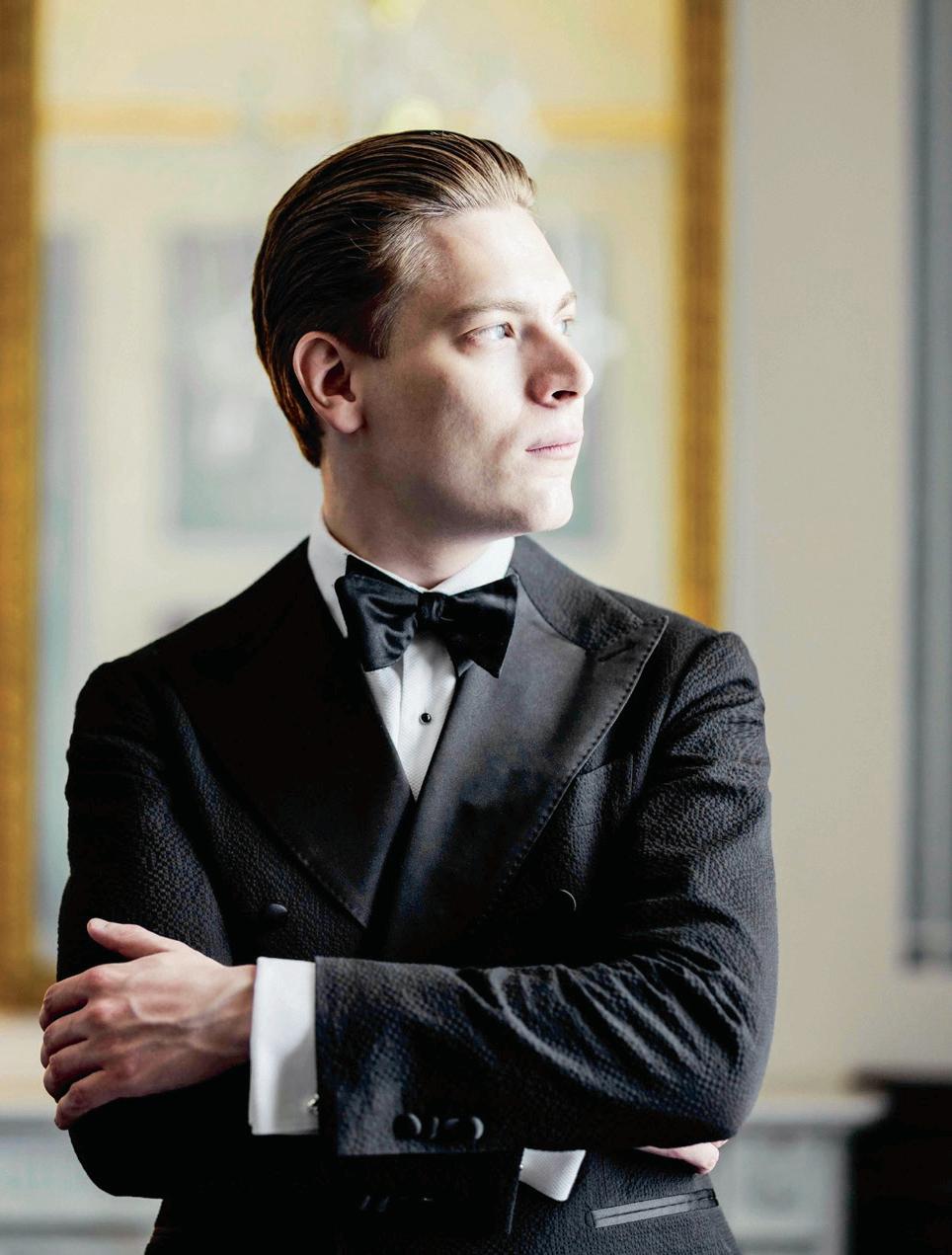
Gardens of Spain and Hawar Tawfiq’s M.C. Escher’s Imagination. Additional programs pair Mozart’s Clarinet Concerto with works by Betsy Jolas and Thomas Larcher, and Beethoven’s Symphony No. 3 with music by Fanny and Felix Mendelssohn. Mäkelä also leads the orchestra in Bruckner’s Symphony No. 5 as part of a complete cycle celebrating the 200th anniversary of the composer’s birth.
Mäkelä guest conducts three orchestras in the 2023–24 season, returning to the US to lead The Cleveland Orchestra and Chicago Symphony Orchestra and to Germany for three performances with the Munich Philharmonic.
As a cellist, Mäkelä partners with members of the Oslo Philharmonic, Orchestre de Paris, and Concertgebouworkest for occasional programs and each summer performs at the Verbier Festival in chamber music concerts with fellow artists.
clevelandorchestra.com | 19
PHOTO BY MARCO BORGGREVE
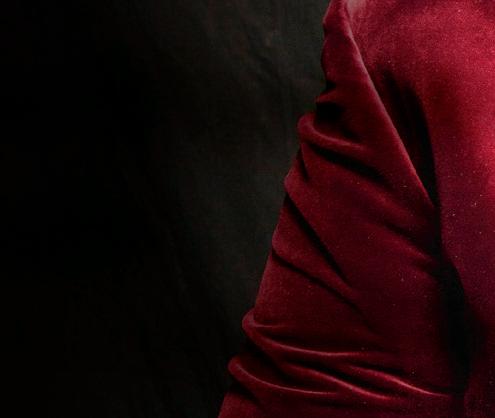
clevelandorchestra.com/festival
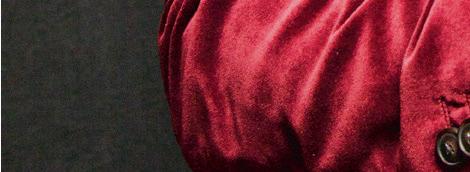

Proud Presenting Sponsor of the Blossom Summer Soirée Terence Blanchard & Friends A Celebration of Wayne Shorter Severance Music Center

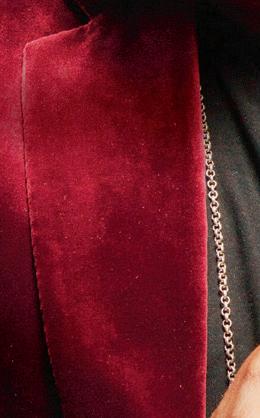
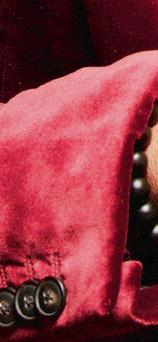

Blossom Summer Soirée
Sunday, July 21
Blossom Music Center


Join us for a magical evening to benefit The Cleveland Orchestra’s summer home. You’ll enjoy a festive dinner party complete with seasonal summer cocktails and friends in Knight Grove. Then you’ll be treated to a concert by Leslie Odom, Jr., and your Cleveland Orchestra.
Learn more and reserve your tickets at
clevelandorchestra.com/soiree
PRESENTS MAY 21
THE ARTIST
Jean-Yves Thibaudet piano
Through elegant musicality and an insightful approach to both contemporary and established repertoire, JeanYves Thibaudet has earned a reputation as one of the world’s finest pianists. In addition to his forays into jazz and opera, he has forged profound friendships around the globe, leading to fruitful collaborations in film, fashion, and visual art. He is a devoted educator and is the first-ever artist-in-residence at the Colburn School, which awards several scholarships in his name.
Thibaudet’s 2023–24 season includes a European tour with the Boston Symphony Orchestra, a trio tour of the United States with Gautier Capuçon and Lisa Batiashvili, performances of Debussy’s Préludes throughout Europe, and engagements with the Montreal Symphony Orchestra, Los Angeles Philharmonic, and Orchestre Philharmonique de Radio France, among others. Thibaudet and Michael Feinstein will also continue their acclaimed program Two Pianos: Who Could Ask for Anything More?
Thibaudet records exclusively for Decca; his extensive catalog has received two Grammy nominations, two ECHO Awards, the Preis der Deutschen Schallplattenkritik, Diapason d’Or, Choc du Monde de la Musique, Edison Prize, and Gramophone awards. His most recent solo album, 2021’s Carte Blanche, features a collection of deeply personal solo
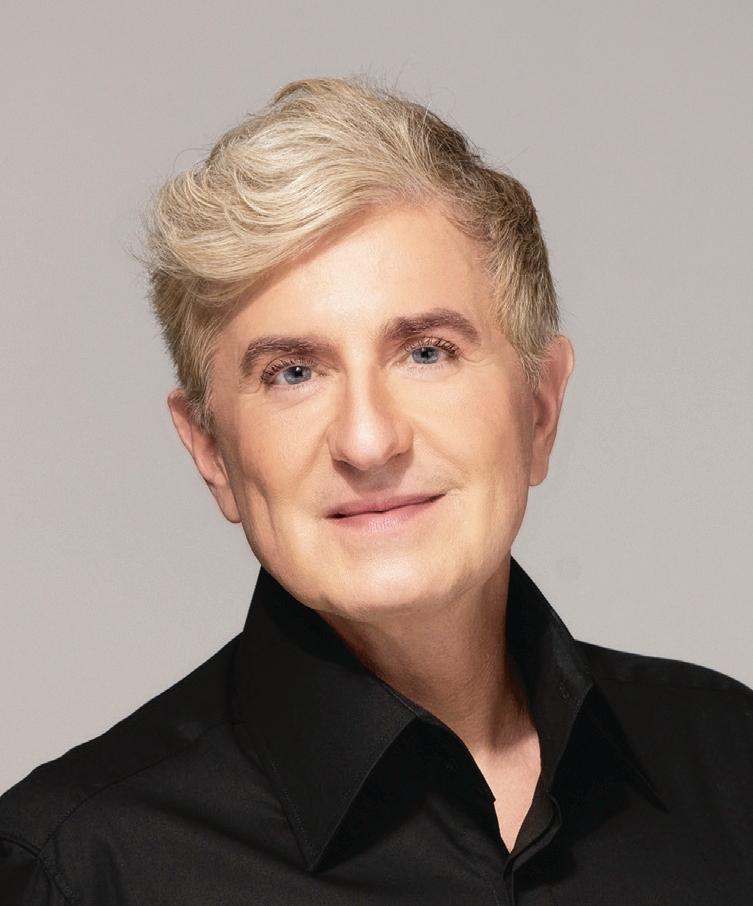
piano pieces never before recorded by the pianist.
Thibaudet has also had an impact on the worlds of fashion, film, and philanthropy. He was soloist on Dario Marianelli’s award-winning scores for Atonement and Pride & Prejudice, as well as Alexandre Desplat’s soundtracks for Extremely Loud & Incredibly Close and The French Dispatch. In 2004 he served as president of the prestigious charity auction at the Hospices de Beaune. His concert wardrobe is designed by Dame Vivienne Westwood.
Thibaudet was born in Lyon, France, where he began his piano studies at age 5 before entering the Paris Conservatory at age 12. Among his numerous commendations is the Victoire d’Honneur and a place in Hollywood Bowl’s Hall of Fame. Previously a Chevalier of the Ordre des Arts et des Lettres, Thibaudet was awarded the title Officier by the French Ministry of Culture in 2012. In 2020, he was named Special Representative for the promotion of French Creative and Cultural Industries in Romania. He is co-artistic advisor, with Gautier Capuçon, of the Festival Musique & Vin au Clos Vougeot.
clevelandorchestra.com | 21
PHOTO ©E.CAREN
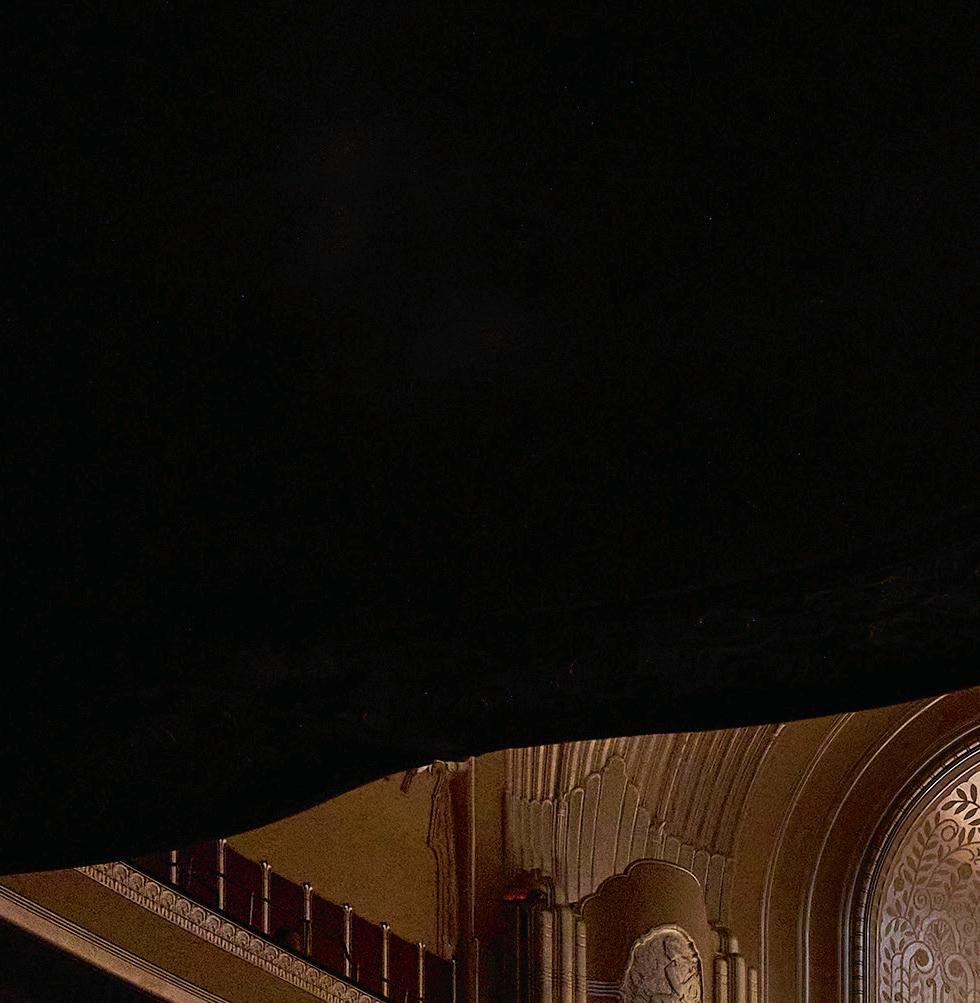
Expect the Extraordinary
Whether escaping the bustle of daily life with a beloved classic or discovering new worlds with the less familiar, come share the extraordinary this season with The Cleveland Orchestra .
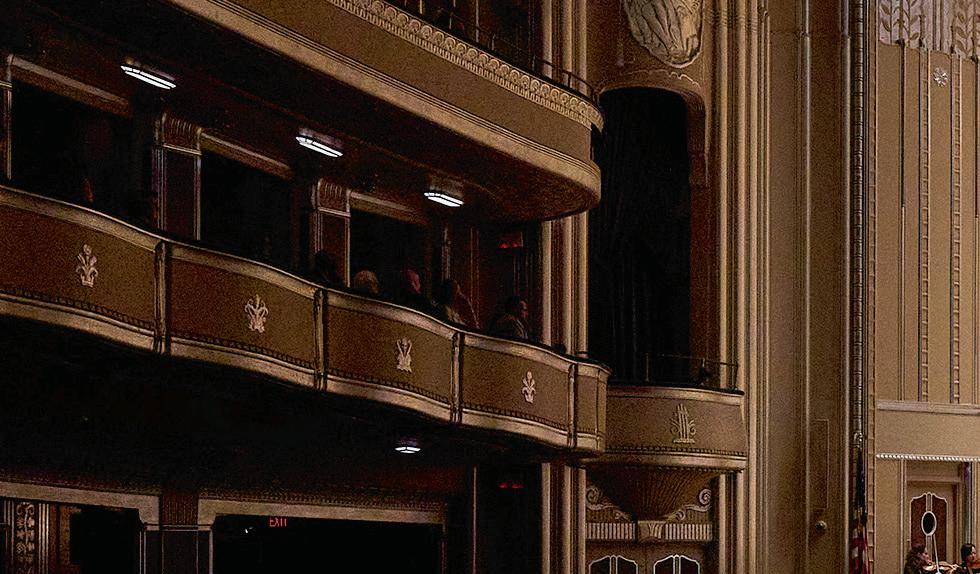



Subscriptions on sale now for the 2024–25 Season
When you subscribe, you provide vital support to your Cleveland Orchestra and enjoy these exclusive benefits:
•The best seats at the best prices
• Free and easy ticket exchanges
• Purchase your parking in advance
• 20% off additional ticket purchases
• 10% off at The Cleveland Orchestra Store
• Money back guarantee
clevelandorchestra.com

ABOUT THE CLEVELAND ORCHESTRA
NOW IN ITS SECOND CENTURY , The Cleveland Orchestra, under the leadership of Music Director Franz Welser-Möst since 2002, is one of the most sought-after performing ensembles in the world. Year after year, the ensemble exemplifies extraordinary artistic excellence, creative programming, and community engagement. The New York Times has called Cleveland “the best in America” for its virtuosity, elegance of sound, variety of color, and chamber-like musical cohesion.

Founded by Adella Prentiss Hughes, the Orchestra performed its inaugural concert in December 1918. By the middle of the century, decades of growth and sustained support had turned it into one of the most admired globally.
The past decade has seen an increasing number of young people attending concerts, bringing fresh attention to The Cleveland Orchestra’s legendary sound and committed programming. More recently, the Orchestra launched several bold digital projects, including the streaming platform Adella, the podcast On a Personal Note, and its own recording label, a new chapter in the Orchestra’s long and distinguished recording and broadcast history. Together, they have captured the Orchestra’s unique artistry and the musical achievements of the Welser-Möst and Cleveland Orchestra partnership.
The 2023 – 24 season marks Franz Welser-Möst’s 22nd year as music director, a period in which The Cleveland Orchestra earned unprecedented acclaim around the world, including a series of residencies at the Musikverein in Vienna, the first of its kind by an American orchestra, and a number of acclaimed opera presentations.
Since 1918, seven music directors — Nikolai Sokoloff, Artur Rodziński, Erich Leinsdorf, George Szell, Lorin Maazel, Christoph von Dohnányi, and Franz Welser-Möst — have guided and shaped the ensemble’s growth and sound. Through concerts at home and on tour, broadcasts, and a catalog of acclaimed recordings, The Cleveland Orchestra is heard today by a growing group of fans around the world.


clevelandorchestra.com | 23
@ClevelandOrchestra @clevelandorchestra @CleveOrchestra @Cleveorch
PHOTO
BY
YEVHEN GULENKO/HUMAN ARTIST
THE CLEVELAND ORCHESTRA
Franz Welser-Möst, Music Director
KELVIN SMITH FAMILY CHAIR
FIRST VIOLINS
Jung-Min Amy Lee
ASSOCIATE CONCERTMASTER
Gretchen D. and Ward Smith Chair
Jessica Lee
ASSISTANT CONCERTMASTER
Clara G. and George P. Bickford Chair
Stephen Tavani
ASSISTANT CONCERTMASTER
Dr. Ronald H. Krasney Chair
Wei-Fang Gu
Drs. Paul M. and Renate H. Duchesneau Chair
Kim Gomez
Elizabeth and Leslie Kondorossy Chair
Chul-In Park
Harriet T. and David L. Simon Chair
Miho Hashizume
Theodore Rautenberg Chair
Jeanne Preucil Rose
Larry J.B. and Barbara S. Robinson Chair
Alicia Koelz
Oswald and Phyllis Lerner Gilroy Chair
Yu Yuan
Patty and John Collinson Chair
Isabel Trautwein
Trevor and Jennie Jones Chair
Katherine Bormann
Analisé Denise Kukelhan
Gladys B. Goetz Chair
Zhan Shu
Youngji Kim
Genevieve Smelser
SECOND VIOLINS
Stephen Rose*
Alfred M. and Clara T. Rankin Chair
Jason Yu2
James and Donna Reid Chair
Eli Matthews1
Patricia M. Kozerefski and Richard J. Bogomolny Chair
Sonja Braaten Molloy
Carolyn Gadiel Warner
Elayna Duitman
Ioana Missits
Jeffrey Zehngut
Sae Shiragami
Kathleen Collins
Beth Woodside
Emma Shook
Dr. Jeanette Grasselli Brown and Dr. Glenn R. Brown Chair
Yun-Ting Lee
Jiah Chung Chapdelaine
Liyuan Xie
VIOLAS
Wesley Collins*
Chaillé H. and Richard B.
Tullis Chair
Stanley Konopka2
Mark Jackobs
Jean Wall Bennett Chair
Lisa Boyko
Richard and Nancy
Sneed Chair
Richard Waugh
Lembi Veskimets
The Morgan Sisters Chair
Eliesha Nelson
Anthony and Diane Wynshaw-Boris Chair
Joanna Patterson Zakany
William Bender
Gareth Zehngut
CELLOS
Mark Kosower*
Louis D. Beaumont Chair
Richard Weiss1
The GAR Foundation Chair
Charles Bernard2
Helen Weil Ross Chair
Bryan Dumm
Muriel and Noah Butkin Chair
Tanya Ell
Thomas J. and Judith Fay
Gruber Chair
Ralph Curry
Brian Thornton
William P. Blair III Chair
David Alan Harrell
Martha Baldwin
Dane Johansen
Paul Kushious
BASSES
Maximilian Dimoff*
Clarence T. Reinberger Chair
Derek Zadinsky2
Charles Paul1
Mary E. and F. Joseph
Callahan Chair
Mark Atherton
Thomas Sperl
Henry Peyrebrune
Charles Barr Memorial Chair
Charles Carleton
Scott Dixon
HARP
Trina Struble*
Alice Chalifoux Chair
FLUTES
Joshua Smith*
Elizabeth M. and William C. Treuhaft Chair
Saeran St. Christopher
Jessica Sindell2
Austin B. and Ellen W. Chinn Chair
Mary Kay Fink
PICCOLO
Mary Kay Fink
Anne M. and M. Roger Clapp Chair
OBOES
Frank Rosenwein*
Edith S. Taplin Chair
Corbin Stair
Sharon and Yoash Wiener Chair
Jeffrey Rathbun2
Everett D. and Eugenia S.
McCurdy Chair
Robert Walters
ENGLISH HORN
Robert Walters
Samuel C. and Bernette K. Jaffe Chair
CLARINETS
Afendi Yusuf*
Robert Marcellus Chair
Robert Woolfrey
Victoire G. and Alfred M.
Rankin, Jr. Chair
Daniel McKelway2
Robert R. and Vilma L. Kohn Chair
Amy Zoloto
E-FLAT CLARINET
Daniel McKelway
Stanley L. and Eloise M.
Morgan Chair
BASS CLARINET
Amy Zoloto
Myrna and James Spira Chair
BASSOONS
John Clouser*
Louise Harkness Ingalls Chair
Gareth Thomas
Barrick Stees2
Sandra L. Haslinger Chair
Jonathan Sherwin
CONTRABASSOON
Jonathan Sherwin
HORNS
Nathaniel Silberschlag*
George Szell Memorial Chair
Michael Mayhew§
Knight Foundation Chair
Jesse McCormick
Robert B. Benyo Chair
Hans Clebsch
Richard King
Meghan Guegold Hege
24 | 2023/2024 SEASON

TRUMPETS
Michael Sachs*
Robert and Eunice Podis Weiskopf Chair
Jack Sutte
Lyle Steelman2
James P. and Dolores D. Storer Chair
Michael Miller
CORNETS
Michael Sachs*
Mary Elizabeth and G. Robert Klein Chair
Michael Miller
TROMBONES
Brian Wendel*
Gilbert W. and Louise I.
Humphrey Chair
Richard Stout
Alexander and Marianna C. McAfee Chair
Shachar Israel2
BASS TROMBONE
Luke Sieve
EUPHONIUM & BASS TRUMPET
Richard Stout
TUBA
Yasuhito Sugiyama*
Nathalie C. Spence and Nathalie S. Boswell Chair
TIMPANI
vacant PERCUSSION
Marc Damoulakis*
Margaret Allen Ireland Chair
Thomas Sherwood
Tanner Tanyeri
KEYBOARD INSTRUMENTS
Carolyn Gadiel Warner
Marjory and Marc L. Swartzbaugh Chair
LIBRARIANS
Michael Ferraguto
Joe and Marlene Toot Chair
Donald Miller
Gabrielle Petek
ENDOWED CHAIRS CURRENTLY UNOCCUPIED
Elizabeth Ring and William
Gwinn Mather Chair
Blossom-Lee Chair
Virginia M. Linsdseth, PhD, Chair
Paul and Lucille Jones Chair
Charles M. and Janet G.
Kimball Chair
Sunshine Chair
Otto G. and Corinne T. Voss Chair
Mr. and Mrs. Richard K. Smucker Chair
Rudolf Serkin Chair
CONDUCTORS
Christoph von Dohnányi
MUSIC DIRECTOR LAUREATE
Daniel Reith
ASSISTANT CONDUCTOR
Sidney and Doris Dworkin Chair
Lisa Wong
DIRECTOR OF CHORUSES
Frances P. and Chester C.
Bolton Chair
* Principal
§ Associate Principal
1 First Assistant Principal
2
Assistant Principal
This roster lists full-time members of The Cleveland Orchestra. The number and seating of musicians onstage varies depending on the piece being performed. Seating within the string sections rotates on a periodic basis.
clevelandorchestra.com | 25
PHOTO
BY
YEVHEN GULENKO/HUMAN ARTIST
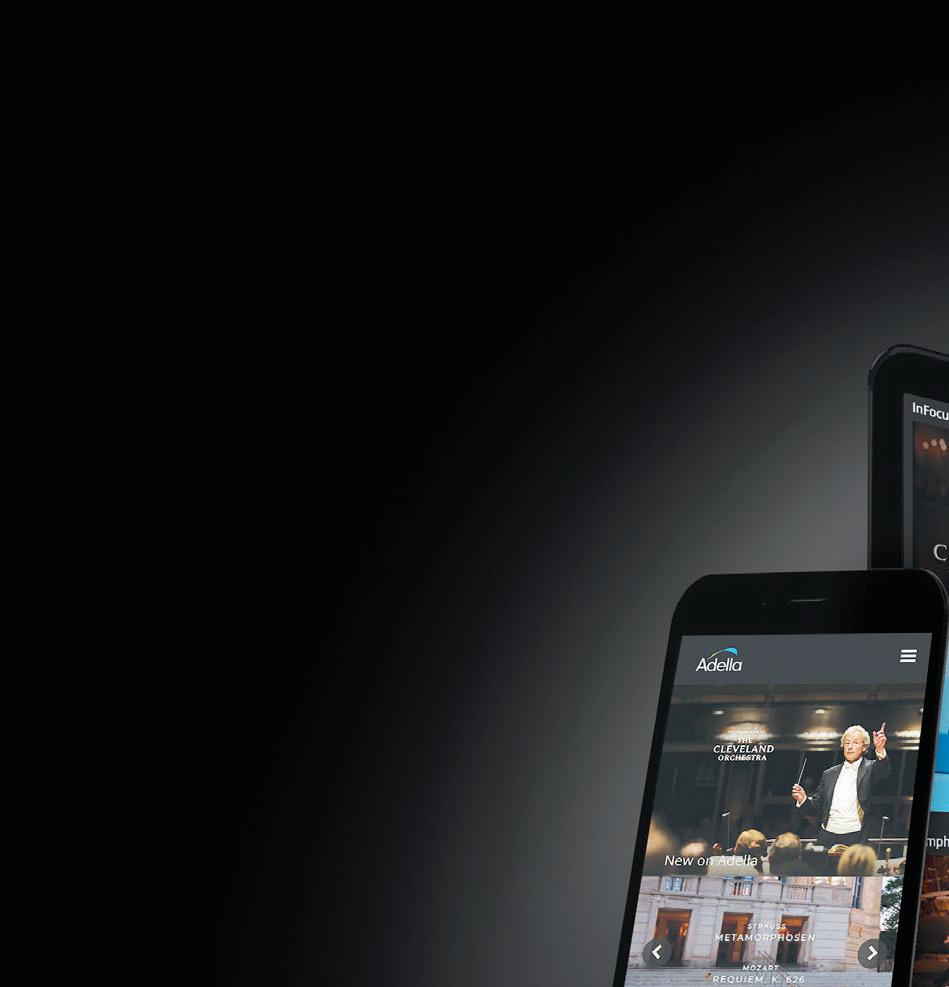

Experience The Cleveland Orchestra’s digital platform with new & improved features.

NEW Concert Experiences
Experience on-demand concerts with exclusive interviews and behind-the-scenes features!
Now available: In the Moment featuring Prokofiev’s Symphony No. 6.
NEW Livestreamed Concerts
Enjoy six concerts broadcast live from Severance throughout the 2024 – 25 season.
COMING SOON
Archival Audio Recordings
By popular demand, stream exclusive recordings from The Cleveland Orchestra’s audio archives.
NEW Educational Content
Access videos and learning resources for children, students, and teachers.
Visit stream.adella.live/premium or scan the QR code to secure your subscription today!

Questions? Email
adellahelp@clevelandorchestra.com or call 216-231-7300
THE CLEVELAND ORCHESTRA’S DIGITAL STREAMING SERVICE & APP
THE 2023/2024 SEASON
CALENDAR
Pre-concert lectures are held in Reinberger Chamber Hall one hour prior to the performance.
SPRING
APR 18 – 20
THE RITE OF SPRING
Klaus Mäkelä, conductor
Jean-Yves Thibaudet, piano
MILHAUD Le Bœuf sur le toit
GERSHWIN Concerto in F
STRAVINSKY The Rite of Spring
Pre-concert lecture by Caroline Oltmanns
APR 26 – 28
RACHMANINOFF’S SECOND PIANO CONCERTO
David Afkham, conductor
Beatrice Rana, piano
UNSUK CHIN subito con forza
RACHMANINOFF Piano Concerto
No. 2
BARTÓK Concerto for Orchestra
Pre-concert lecture by James O’Leary
MAY 2 – 4
LANG LANG PLAYS
SAINT-SAËNS
Franz Welser-Möst, conductor
Lang Lang, piano *
SAINT-SAËNS Piano Concerto
No. 2 *
BERLIOZ Symphonie fantastique
Pre-concert lecture by Caroline Oltmanns
* Not performed on the Friday matinee concert
MAY 15–26
2024 MANDEL OPERA & HUMANITIES FESTIVAL
For more information on festival events visit: clevelandorchestra.com/festival
MAY 16, 18, 24 & 26
MOZART’S MAGIC FLUTE
Franz Welser-Möst, conductor
Nikolaus Habjan, director
Julian Prégardien, tenor
Ludwig Mittelhammer, baritone
Christina Landshamer, soprano
The Cleveland Orchestra Chorus
MOZART The Magic Flute
Staged production sung in German with projected supertitles
MAY 17
CONRAD TAO IN RECITAL: POWER AND INFLUENCE
Conrad Tao, piano
Dane Johansen, cello
MAY 21
TERENCE BLANCHARD & FRIENDS: A CELEBRATION OF WAYNE SHORTER
Terence Blanchard, trumpet
Featuring the E-Collective and Turtle Island Quartet
MAY 23 & 25
MOZART’S GRAN PARTITA
Franz Welser-Möst, conductor
Leila Josefowicz, violin
WAGNER Prelude and Liebestod from Tristan und Isolde
BERG Violin Concerto
MOZART Serenade No. 10, “Gran Partita”
Pre-concert lecture by Michael Strasser
For tickets & more information visit:
clevelandorchestra.com
YOUR VISIT
HEALTH & SAFETY
The Cleveland Orchestra is committed to creating a comfortable, enjoyable, and safe environment for all guests at Severance Music Center. While mask and COVID-19 vaccination are recommended they are not required. Protocols are reviewed regularly with the assistance of our Cleveland Clinic partners; for up-to-date information, visit: clevelandorchestra. com/attend/health-safety
LATE SEATING
As a courtesy to the audience members and musicians in the hall, late-arriving patrons are asked to wait quietly until the first convenient break in the program. These seating breaks are at the discretion of the House Manager in consultation with the performing artists.
PAGERS, CELL PHONES & WRISTWATCH ALARMS
As a courtesy to others, please silence all devices prior to the start of the concert.
PHOTOGRAPHY, VIDEOGRAPHY & RECORDING
Audio recording, photography, and videography are prohibited during performances at Severance. Photographs can only be taken when the performance is not in progress.
HEARING AIDS & OTHER HEALTH-ASSISTIVE DEVICES
For the comfort of those around you, please reduce the volume on hearing aids and other devices that may produce a noise that would detract from the program. For Infrared Assistive-Listening Devices, please see the House Manager or Head Usher for more details.
FREE MOBILE APP TICKET WALLET
Download today for instant, secure, and paperless access to your concert tickets.
For more information and direct links to download, visit clevelandorchestra.com/ticketwallet or scan the code with your smartphone camera to download the app for iPhone or Android.
Available for iOS and Android on Google Play and at the Apple App Store.
IN THE EVENT OF AN EMERGENCY
Contact an usher or a member of house staff if you require medical assistance. Emergency exits are clearly marked throughout the building. Ushers and house staff will provide instructions in the event of an emergency.
AGE RESTRICTIONS
Regardless of age, each person must have a ticket and be able to sit quietly in a seat throughout the performance. Classical Season subscription concerts are not recommended for children under the age of 8. However, there are several age-appropriate series designed specifically for children and youth, including Music Explorers (for 3 to 6 years old) and Family Concerts (for ages 7 and older).
The Cleveland Orchestra is grateful to the following organizations for their ongoing generous support of The Cleveland Orchestra: the State of Ohio and Ohio Arts Council and to the residents of Cuyahoga County through Cuyahoga Arts and Culture.
Cleveland Orchestra performances are broadcast as part of regular programming on ideastream/WCLV Classical 90.3 FM, Saturdays at 8 PM and Sundays at 4 PM.
The Cleveland Orchestra is proud of its long-term partnership with Kent State University, made possible in part through generous funding from the State of Ohio. The Cleveland Orchestra is proud to have its home, Severance Music Center, located on the campus of Case Western Reserve University, with whom it has a long history of collaboration and partnership.
© 2024 The Cleveland Orchestra and the Musical Arts Association Program books for Cleveland Orchestra concerts are produced by The Cleveland Orchestra and are distributed free to attending audience members.
EDITORIAL
Kevin McBrien, Publications Manager
The Cleveland Orchestra
kmcbrien@clevelandorchestra.com
DESIGN
Elizabeth Eddins, Eddinsdesign
eddinsdesign@gmail.com
ADVERTISING
Live Publishing Company, 216-721-1800 clevelandorchestra.com
28 | 2023/2024 SEASON

“We are paving a path for our next chapter by establishing connections now. We can keep enjoying our wonderful skyline views and musical activities, knowing our plan is in place.”
As a Judson at Home member, you’ll have access to an engaging community, cultural programs, wellness activities and an array of dining venues. Most of all, you have all the services and amenities of a retirement community at your fingertips while living in your own home.
PHOTO CREDITS XXXX clevelandorchestra.com | III
(216)791-2436 judsonsmartliving.org Become a Member Today! Membership is Music to Our Ears!
more about Max and Tony’s experience
judsonsmartliving.org/blog.
Read
at
Max Bunker and Tony Bianchi / Bratenahl


SETTING THE STAGE
for Success


We believe that all Cleveland youth should have access to high-quality arts education. Through the generosity of our donors, we have invested more than $12.6 million since 2016 to scale up neighborhood-based programs that serve thousands of youth year-round in music, dance, theater, photography, literary arts and curatorial mastery. That’s setting the stage for success. Find your passion, and partner with the Cleveland Foundation to make your greatest charitable impact.
(877) 554-5054
www.ClevelandFoundation.org/Success

Tri-C Creative Arts Dance Academy
















































































































